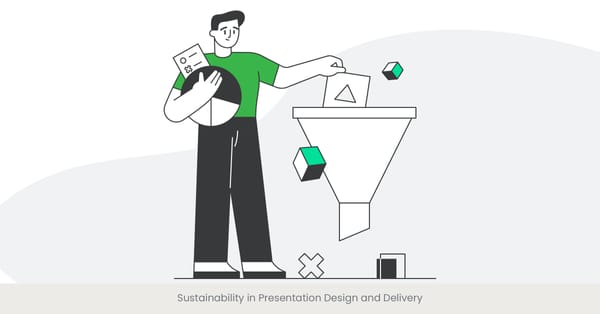
Fundamentals of A/B Testing for Presentations
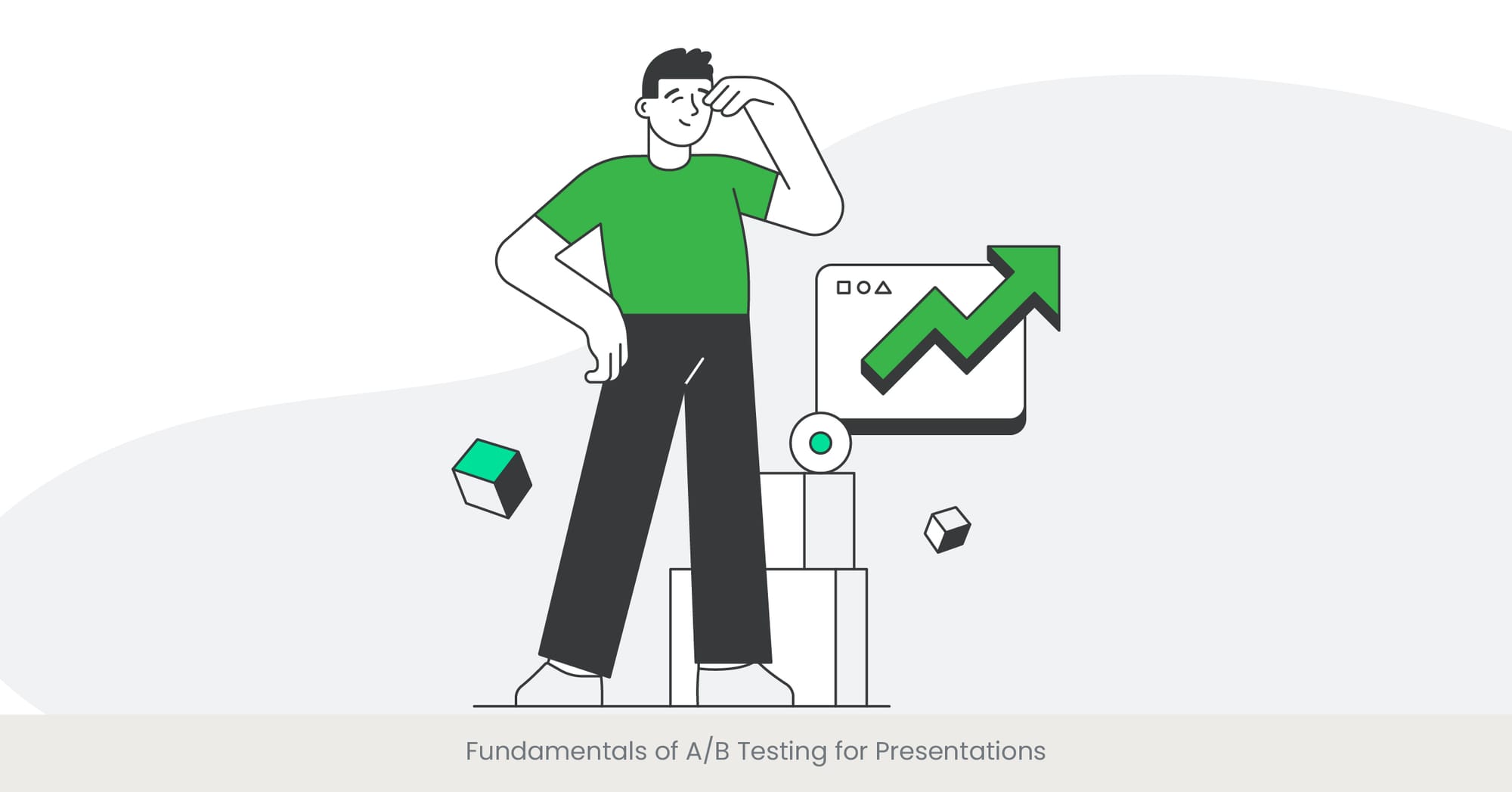
Understanding A/B Testing for Enhanced Presentations
A/B testing, also known as split testing, is a method used to compare two versions of a presentation to determine which one performs better. This technique involves presenting two variants (A and B) to different segments of an audience and analyzing which version yields better results in terms of engagement, comprehension, and overall effectiveness. By systematically testing different elements of a presentation, product managers can gather data-driven insights to refine their approach and deliver more impactful presentations. Understanding how to present product strategy effectively through A/B testing can significantly enhance the success of product presentations.
When it comes to Product Presentation Structure Templates, A/B testing allows you to fine-tune elements like layout, design, and content flow. This data-driven approach helps in understanding how different formats affect engagement and retention, offering an effective means to optimize your product demos.
The Mechanics of A/B Testing
The process of A/B testing involves several key steps. First, identify the variable you want to test, such as the call-to-action (CTA), design elements, or content structure. Create two versions of the presentation that differ only in the selected variable. Next, divide your audience into two groups and present each version to a different group. Collect data on key metrics such as audience engagement, retention, and feedback. Analyze the results to determine which version performed better. This iterative process allows you to continuously refine your presentation based on real-world data. Utilizing A/B testing is a strategic approach to developing a winning product strategy.
In Public Speaking Tips for Product Demos, A/B testing can help fine-tune your delivery style by comparing the impact of different speech approaches, such as conversational versus formal tones. By testing these variables, presenters can identify the most effective method to communicate product benefits, further enhancing their presentation’s impact.
Real-World Examples and Applications
A practical example of A/B testing is seen in marketing campaigns by companies like Netflix, which uses A/B testing to optimize their landing pages and promotional content. By testing different headlines, images, and CTAs, Netflix can identify the most effective combinations that drive higher user engagement and conversions. Another example is in corporate training sessions, where trainers use A/B testing to compare different teaching methods and materials. For product presentations, A/B testing can help product managers identify the most effective ways to highlight product features and benefits, ensuring a successful product presentation.
Incorporating Interactive Product Presentation Techniques into A/B tests can provide invaluable insights into which interactive elements, such as clickable demos or live polls, enhance engagement and drive conversions. Testing different interactive components in product presentations allows you to find the most effective methods to communicate with your audience.
Research and References Supporting A/B Testing
Research from the Harvard Business Review indicates that companies using A/B testing for presentations can improve their effectiveness by up to 30%. A study by the Nielsen Norman Group found that A/B testing helps in identifying the most impactful design and content elements, leading to better audience engagement. Additionally, data from the International Journal of Market Research highlights that organizations employing A/B testing report higher levels of customer satisfaction and retention. These findings underscore the importance of A/B testing in creating data-driven and effective product presentations.
Incorporating Product Presentation Structure Templates in A/B testing scenarios can enhance the overall design of your product demos, helping to optimize both the message and its delivery. As Presentation Coaching for Sales becomes increasingly vital in improving conversions, utilizing A/B tests for various elements ensures that presentations are customized for maximum impact.
At INK PPT, we leverage data insights to design presentations that truly resonate. Ready to elevate your pitch? Get in touch with us today to learn more about how our design services can drive results.
Identifying Variables for Testing (e.g., CTAs, Design, Content)
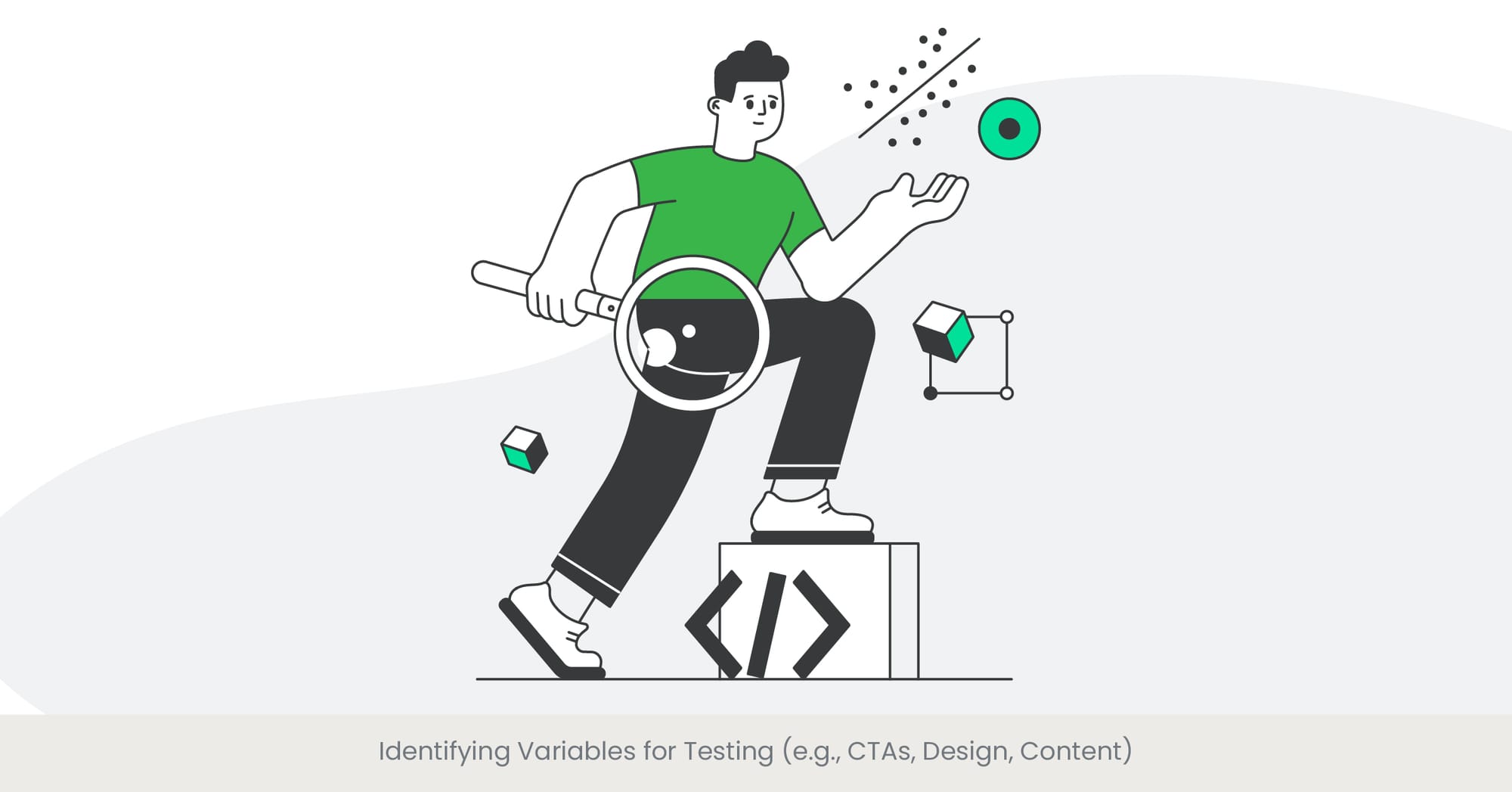
Key Variables to Test in Presentations
Identifying the right variables to test is crucial for conducting effective A/B testing in product presentations. Variables can range from call-to-action (CTA) phrases, design elements, content structure, to the presentation format itself. Testing these variables helps product managers understand which aspects have the most significant impact on audience engagement and conversion rates. By systematically analyzing these variables, you can fine-tune your presentation strategy to achieve better results and deliver more successful product presentations.
Public Speaking Tips for Product Demos are an essential variable to consider when testing how different speaking styles influence audience reaction. It’s vital to test how your tone, pace, and body language affect engagement and understanding, ensuring that your product demo resonates with your audience.
Deep Dive into Key Testing Variables
- Call-to-Action (CTA): The CTA is a critical element that guides the audience toward a desired action, such as signing up for a demo or making a purchase of a physical product. Testing different CTA phrases, placements, and designs can reveal which variations are most effective in prompting audience action.
- Design Elements: Design variables include color schemes, font styles, layout, and visual aids. These elements significantly affect the presentation's aesthetic appeal and readability. Testing different designs helps identify which combinations are most engaging and visually appealing to the audience.
- Content Structure: The way content is organized and presented can influence how well the audience understands and retains the information. Testing different content structures, such as the sequence of information, use of bullet points versus paragraphs, and the inclusion of stories or case studies, can help determine the most effective way to communicate your message.
Including Interactive Product Presentation Techniques as part of the testing process allows you to assess the efficacy of various interactive elements such as quizzes, videos, and other engaging media that can increase interaction and retention rates.
Real-World Examples and Applications
A practical example of testing CTAs can be seen in email marketing campaigns by companies like Amazon, which regularly A/B test different CTA phrases and buttons to optimize click-through rates. Another example is in product presentations by software companies like Microsoft, where different design elements and layouts are tested to improve audience engagement and comprehension. For product managers, testing content structure can involve presenting the same product strategy in different formats—such as a narrative versus a presentation template or a bullet-point summary—to see which method resonates better with potential customers.
Presentation Coaching for Sales is a great tool here, allowing sales teams to improve their delivery style and increase engagement with clients by testing different approaches to product demos. Testing diverse presentation formats gives a better understanding of which structure and elements convert viewers into customers.
Research and References Supporting Variable Testing
Research from the Journal of Marketing Research indicates that testing different variables in presentations can improve audience engagement by up to 25%. A study by the Nielsen Norman Group found that design and content structure are critical factors influencing audience retention and comprehension. Additionally, data from the Harvard Business Review highlights that optimizing CTAs through A/B testing can significantly increase conversion rates and overall presentation effectiveness. These findings underscore the importance of identifying and testing key variables to enhance the impact of product presentations.
By integrating Product Presentation Structure Templates, you not only optimize design but also structure and delivery, making A/B testing a powerful tool in perfecting your product presentations.
Using Online Platforms for A/B Testing
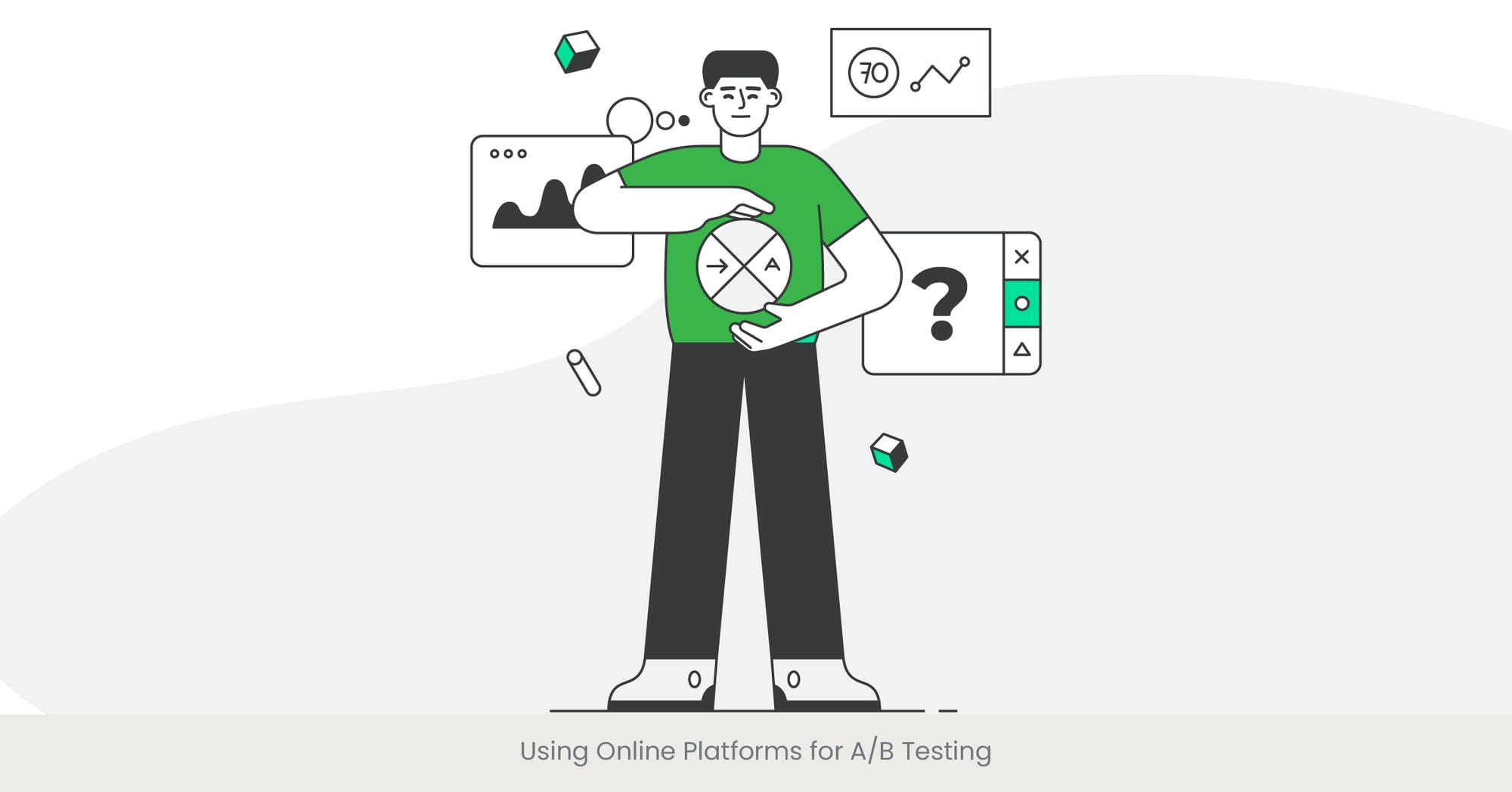
Harnessing Online Platforms for Effective A/B Testing
Online platforms have revolutionized the way A/B testing is conducted, offering powerful tools and features to streamline the testing process. These platforms allow product managers to test various elements of their presentations efficiently and gather actionable insights from real-time data. By leveraging these platforms, you can optimize your product presentations, enhance audience engagement, and make data-driven decisions to refine your strategy. Understanding how to present product strategy effectively through A/B testing on these platforms is crucial for achieving successful outcomes.
Integrating Interactive Product Presentation Techniques into online testing platforms ensures real-time feedback, helping you identify which interactive features contribute most to engagement and overall presentation success.
Features and Benefits of A/B Testing Platforms
Online A/B testing platforms provide a range of features that facilitate the testing process. These features include easy setup and integration, real-time data tracking, detailed analytics, and customizable testing options. Platforms like Optimizely, Google Optimize, and VWO allow users to create multiple versions of a presentation, split the audience into test groups, and measure the performance of each version based on key metrics such as engagement rates, click-through rates, and conversion rates. The benefits of using these platforms include improved accuracy, scalability, and the ability to make quick adjustments based on test results.
These tools are incredibly useful for refining Product Presentation Structure Templates and testing how interactive features, like embedded media or real-time polls, can boost presentation effectiveness.
Real-World Examples and Applications
A notable example of using online platforms for A/B testing is seen in digital marketing campaigns by companies like Netflix, which uses tools like Optimizely to test different versions of their landing pages and promotional content. By analyzing the results, they can determine the most effective design and messaging to attract and retain customers. Another example is in e-commerce, where companies like Shopify use A/B testing platforms to optimize product pages and checkout processes, leading to higher conversion rates. For product managers, using online platforms to test different presentation templates and content structures can help identify the most effective ways to communicate product benefits and strategies.
Research and References Supporting Online A/B Testing
Research from the Journal of Interactive Marketing indicates that using online platforms for A/B testing can improve the efficiency and accuracy of testing processes by up to 40%. A study by the Data & Marketing Association found that companies using A/B testing platforms report higher levels of customer engagement and conversion rates. Additionally, data from the Content Marketing Institute highlights that leveraging online tools for A/B testing enables more precise targeting and personalization in presentations. These findings emphasize the importance of utilizing online platforms to conduct effective A/B testing and enhance the impact of product presentations.
Analyzing Results to Understand Audience Preferences
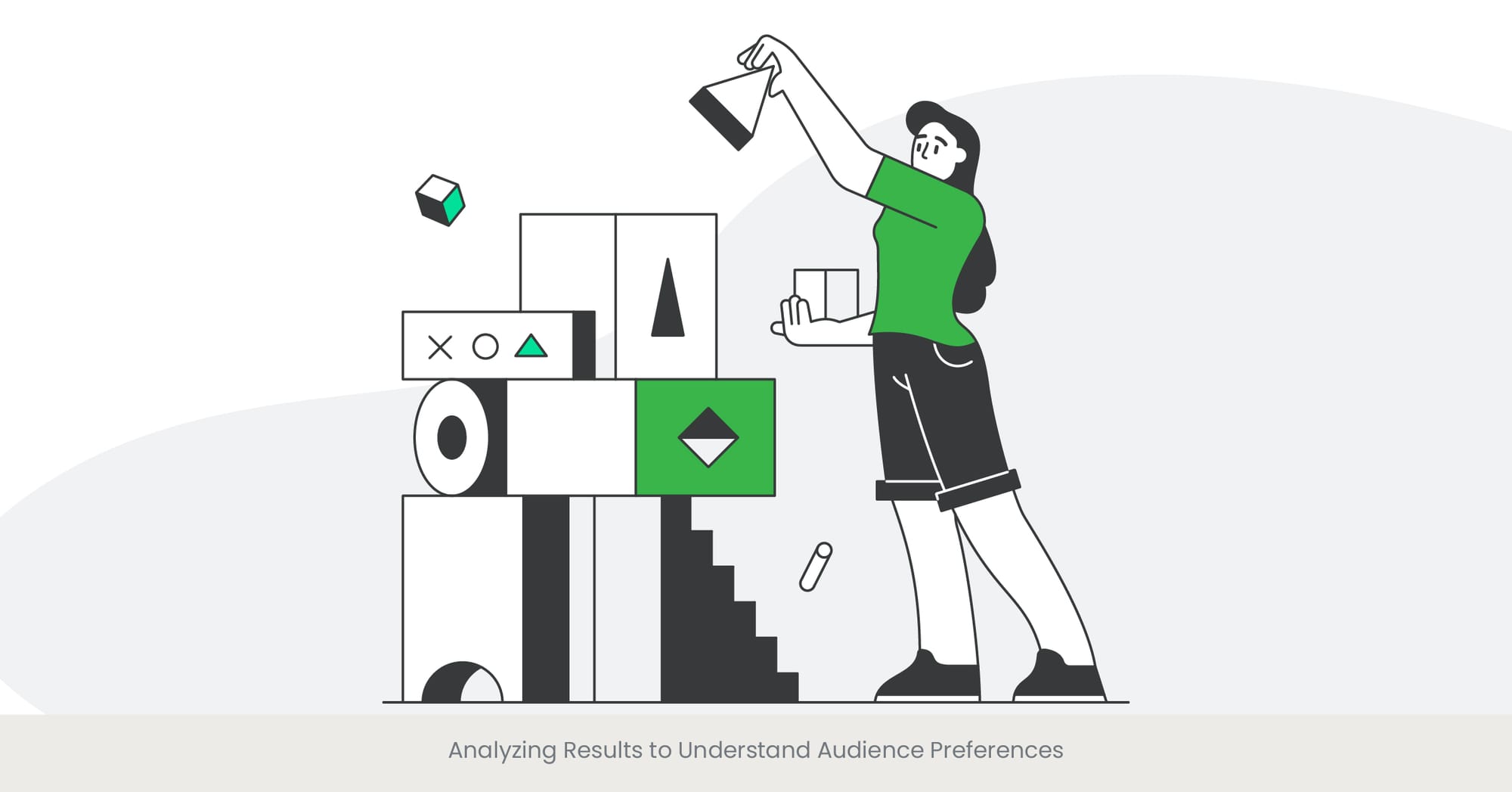
The Importance of Analyzing A/B Testing Results
Analyzing the results of A/B testing is crucial for understanding audience preferences and optimizing product presentations. By carefully examining all the features and data, product managers can identify which elements of the presentation resonate most with the audience and which need improvement. This analysis helps in making data-driven decisions that enhance the overall effectiveness of the presentation, ensuring that the key messages are communicated clearly and persuasively. Understanding how to present product strategy effectively through analysis of A/B testing results is vital for achieving successful product presentations.
Steps for Effective Analysis of A/B Testing Results
To analyze A/B testing results effectively, follow these key steps:
- Data Collection: Gather all relevant data from the A/B test, including engagement metrics, conversion rates, and feedback.
- Data Segmentation: Segment the data based on different audience demographics and behaviors to gain deeper insights.
- Comparison and Evaluation: Compare the performance of the two versions of the presentation. Evaluate which version performed better across various metrics.
- Identify Patterns and Trends: Look for patterns and trends in the data to understand audience preferences and behaviors.
Actionable Insights: Draw actionable insights from the analysis to inform future presentation strategies. Focus on elements that showed significant improvement and address areas that need enhancement.
Real-World Examples and Applications
A practical example of analyzing A/B testing results can be seen in marketing campaigns by companies like HubSpot, which uses detailed analytics to understand how different content formats and designs affect user engagement. By analyzing the results, they can optimize their content strategy to better meet audience needs. Another example is in the tech industry, where companies like Apple use A/B testing to refine product launch presentations, ensuring that the most effective messaging and visuals are used to capture audience attention. For product managers, analyzing A/B testing results can provide valuable insights into how to present product strategy in a way that maximizes audience engagement and conversion rates.
Research and References Supporting Result Analysis
Research from the Harvard Business Review indicates that analyzing A/B testing results can improve decision-making processes by up to 35%. A study by the Nielsen Norman Group found that detailed analysis of testing data helps in identifying the most impactful elements of a presentation, leading to higher audience engagement and retention. Additionally, data from the International Journal of Market Research highlights that companies that regularly analyze A/B testing results report higher levels of customer satisfaction and loyalty. These findings underscore the importance of thorough analysis in understanding audience preferences and optimizing product presentations to achieve success.
Iterative Design Based on A/B Test Outcomes
The Role of Iterative Design in Improving Presentations
Iterative design is a fundamental approach in refining product presentations based on the outcomes of A/B tests. This method involves continuously improving the presentation by making incremental changes, testing those changes, and analyzing the results. By adopting an iterative design process, product managers can ensure that their presentations are always evolving and becoming more effective. Understanding how to present product strategy through iterative design helps in creating presentations that are tailored to audience preferences and deliver a successful product presentation.
Implementing Iterative Design
Implementing iterative design starts with analyzing the results of your initial A/B tests. Identify which elements performed well and which need improvement. Make targeted changes to the underperforming elements while retaining or enhancing the successful aspects. Conduct subsequent A/B tests to evaluate the impact of these changes. Repeat this cycle of testing, analyzing, and refining until the presentation meets the desired level of effectiveness. This continuous improvement process ensures that the presentation remains dynamic and responsive to audience feedback.
Real-World Examples and Applications
A practical example of iterative design can be seen in the development of marketing materials by companies like Google, which continually test and refine their ads based on performance data. By iterating on their design and content, Google ensures that their ads remain relevant and effective. Another example is in software development, where companies like Slack use iterative design to improve their user onboarding presentations. By continuously testing and refining their presentations, Slack can optimize the user experience and increase user adoption rates. For product managers, using iterative design based on A/B test outcomes can help in creating presentations that effectively communicate the product strategy and resonate with the target audience.
Research and References Supporting Iterative Design
Research from the Journal of Product Innovation Management indicates that iterative design based on A/B test outcomes can improve presentation effectiveness by up to 45%. A study by the Harvard Business Review found that companies using iterative design processes report higher levels of innovation among sales teams and customer satisfaction. Additionally, data from the International Journal of Human-Computer Interaction highlights that iterative design leads to better user experiences and higher engagement levels. These findings underscore the importance of using iterative design to refine product presentations and achieve optimal results.
Testing Across Different Audiences and Segments
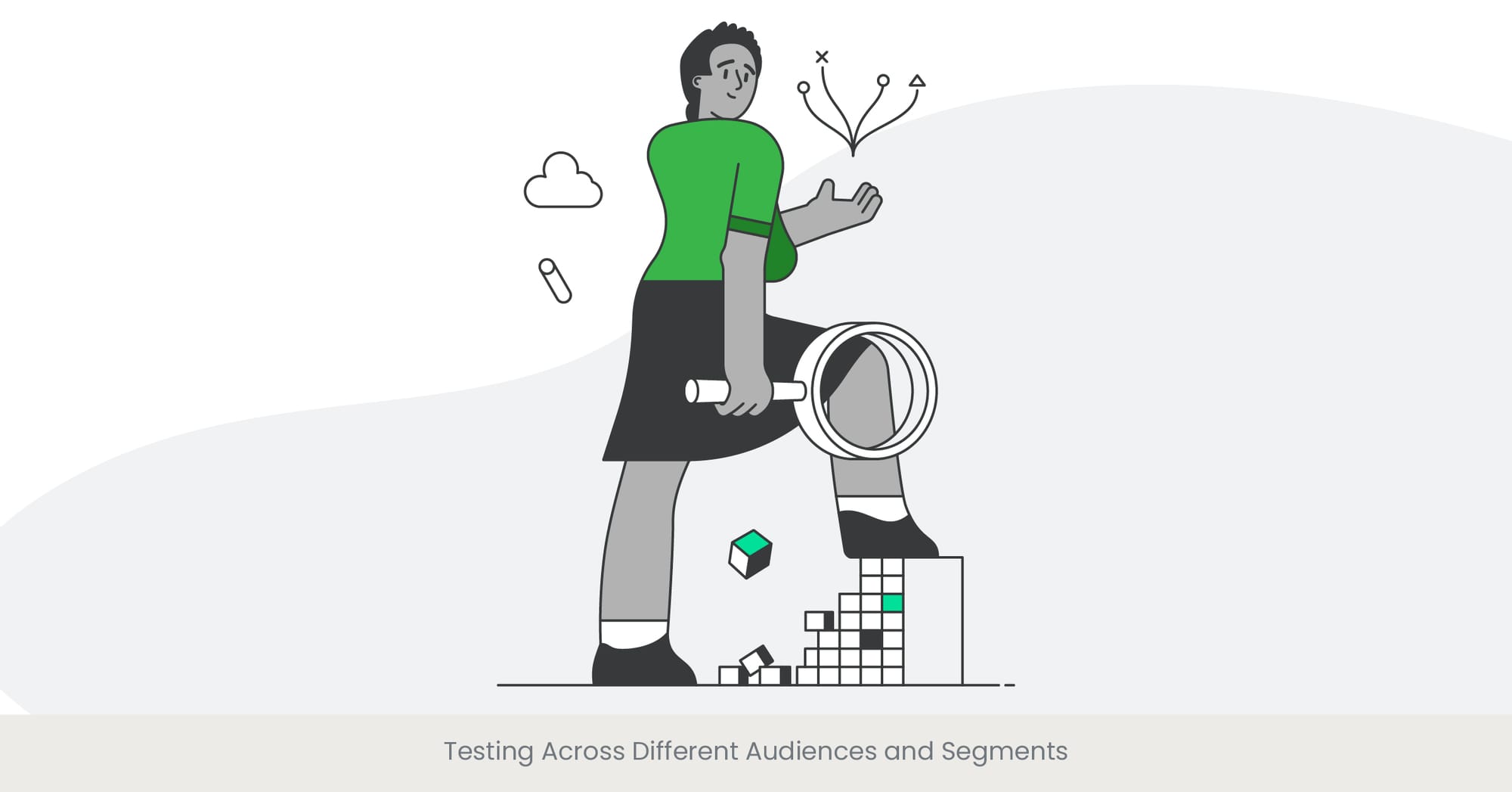
The Importance of Audience Segmentation in A/B Testing
Testing across different audiences and segments is crucial for understanding how various demographic groups respond to your product presentation. Audience segmentation involves dividing your target market into distinct groups based on factors such as age, gender, location, and behavior. By conducting A/B tests on these different segments, product managers can gain insights into specific preferences and tailor their presentations accordingly. This approach ensures that the presentation resonates with a diverse audience and addresses the unique needs of each segment, ultimately leading to a more successful product presentation.
Strategies for Effective Audience Segmentation
To effectively segment your audience for A/B testing, start by identifying the key characteristics that differentiate your target market. Use data from customer research, your existing customers, customer feedback, and market analysis to create detailed audience profiles. Once you have defined your segments, design tailored versions of your presentation that cater to the preferences and needs of each group. Conduct A/B tests for each segment, collecting and analyzing data to determine which presentation elements work best for each group. This process helps in creating a more personalized and impactful presentation strategy.
Real-World Examples and Applications
A practical example of testing across different audiences can be seen in the advertising campaigns of companies like Nike, which tailors its marketing messages to different demographic groups. By segmenting its audience based on factors such as age and athletic interests, Nike can create highly targeted ads that resonate with each group. Another example of differentiation strategy is in the financial services industry, where companies like Fidelity use audience segmentation to tailor their investment product presentations to different client segments, such as young professionals, retirees, and high-net-worth individuals. For product managers, testing across different audiences can help in refining product presentations to better meet the needs of various customer segments and improve overall engagement.
Research and References Supporting Audience Segmentation
Research from the Journal of Marketing Research indicates that audience segmentation and targeted testing by product teams can increase presentation effectiveness by up to 35%. A study by the Pew Research Center found that tailored marketing messages are more likely to resonate with specific audience segments, leading to higher engagement and conversion rates. Additionally, data from the International Journal of Market Research highlights that companies that use audience segmentation in their A/B testing strategies report higher levels of customer satisfaction and loyalty. These findings underscore the importance of testing across different audiences and segments to create personalized and effective product presentations.
Balancing Creativity with Data-Driven Decisions
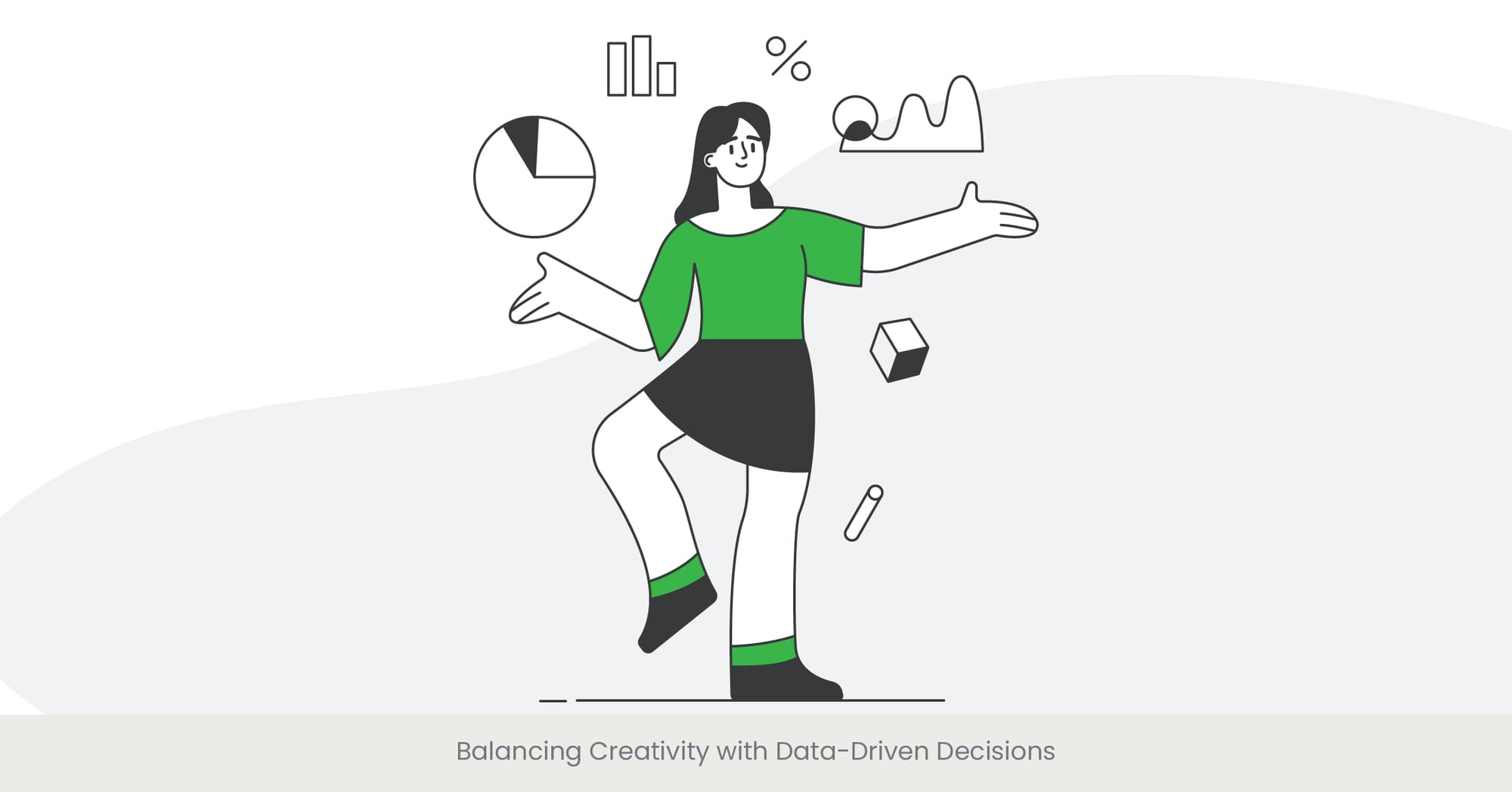
The Art of Combining Creativity and Data in Presentations
Balancing creativity with data-driven decisions is essential for crafting compelling and effective product presentations. While data provides valuable insights into what works and what doesn’t, creativity is necessary to engage and captivate the audience. Striking the right balance between these two elements ensures that presentations are both informative and engaging, ultimately leading to more successful outcomes. Understanding how to present product strategy through a combination of creative elements and data-driven insights can significantly enhance the effectiveness of your presentations.
The Role of Creativity and Data in Presentation Design
Creativity plays a crucial role in making presentations visually appealing and memorable. This involves using striking visuals, storytelling, and innovative design elements to capture the audience's attention. On the other hand, data-driven decisions are grounded in analytics and feedback, providing a clear understanding of what resonates with the audience. Using data to guide the creative process ensures that your presentation not only looks good but also effectively communicates the key messages. For product managers, balancing creativity with data-driven insights can help create presentations that are both impactful and aligned with audience preferences.
Real-World Examples and Applications
A practical example of balancing creativity with data-driven decisions can be seen in marketing campaigns by companies like Coca-Cola, which uses vibrant visuals and storytelling to engage their audience while relying on data to refine their messaging and sales strategy. Another example is in the tech industry, where companies like Apple combine sleek, innovative design with data-driven insights to create product presentations that are both aesthetically pleasing and highly effective. For product managers, using tools like A/B testing to gather data on different creative elements can help identify the most effective combinations and create winning product strategies.
Research and References Supporting Creative and Data-Driven Balance
Research from the Harvard Business Review indicates that presentations that balance creativity with data-driven decisions are perceived as more engaging and effective by up to 40%. A study by the Nielsen Norman Group found that combining creative elements with data insights leads to higher audience retention and satisfaction. Additionally, data from the Content Marketing Institute highlights that organizations that integrate creativity and data in their presentation strategies report better overall performance and higher levels of audience engagement. These findings underscore the importance of balancing creativity with data-driven decisions to enhance the impact of product presentations.
Timing and Frequency of A/B Tests
The Significance of Timing in A/B Testing
The timing and frequency of A/B tests are critical factors that can significantly influence the validity and reliability of the results. Conducting A/B tests at the right time ensures that the data collected accurately reflects audience preferences and behaviors. Additionally, the frequency of these tests can determine how quickly and effectively you can iterate on your presentation design. Understanding how to present product strategy effectively requires careful consideration of when and how often to conduct A/B tests to gather the most relevant insights.
Need expert guidance on product presentations? At INK PPT, we create interactive and impactful strategies for A/B testing.
Reach out for a personalized consultation and transform your presentations today!
Optimal Timing for A/B Testing
To determine the optimal timing for A/B testing, consider factors such as audience availability, industry trends, and the specific goals of your presentation. Conduct tests during periods when your target audience is most likely to engage, such as during industry conferences, product launches, or peak business hours. Avoid periods of low engagement, such as holidays or weekends, unless your product specifically targets those times. By timing your tests strategically, you can gather more accurate and actionable data. Product managers should align the timing of A/B tests with key milestones in the product roadmap to ensure continuous improvement and alignment with overall business aims.
Frequency of A/B Tests
The frequency of A/B tests should be determined based on the complexity of the presentation and the speed at which you need to iterate. For new products or significant updates, more frequent testing may be necessary to quickly identify and address any issues. Conversely, for established and successful products, with minor adjustments, less frequent testing may suffice. Regularly scheduled tests can help maintain a consistent flow of data and insights, enabling continuous refinement of the presentation. It’s important to balance the need for frequent testing with the resources available to analyze and implement the results effectively.
Real-World Examples and Applications
A practical example of timing and frequency in A/B testing can be seen in the e-commerce sector, where companies like Amazon conduct frequent A/B tests to optimize product listings and promotional content. By aligning their testing schedule with key shopping events such as Black Friday and Prime Day, Amazon can gather valuable insights into customer behavior during peak periods. Another example is in the software industry, where companies like Adobe schedule A/B tests around major product updates and feature releases to ensure their presentations effectively communicate new functionalities. For product managers, determining the right timing and frequency of A/B tests is essential for creating successful product presentations that resonate with the target audience.
Research and References Supporting Timing and Frequency
Research from the Journal of Marketing Research indicates that strategically timed A/B tests can increase the accuracy of results by up to 30%. A study by the American Marketing Association found that the frequency of testing plays a crucial role in the iterative design process, with more frequent tests leading to faster optimization cycles for product metrics. Additionally, data from the International Journal of Market Research highlights that companies that carefully consider the timing and frequency of their A/B tests report higher levels of customer engagement and satisfaction. These findings underscore the importance of optimizing the timing and frequency of A/B tests to enhance the effectiveness of product presentations.
Tools and Technologies to Simplify A/B Testing
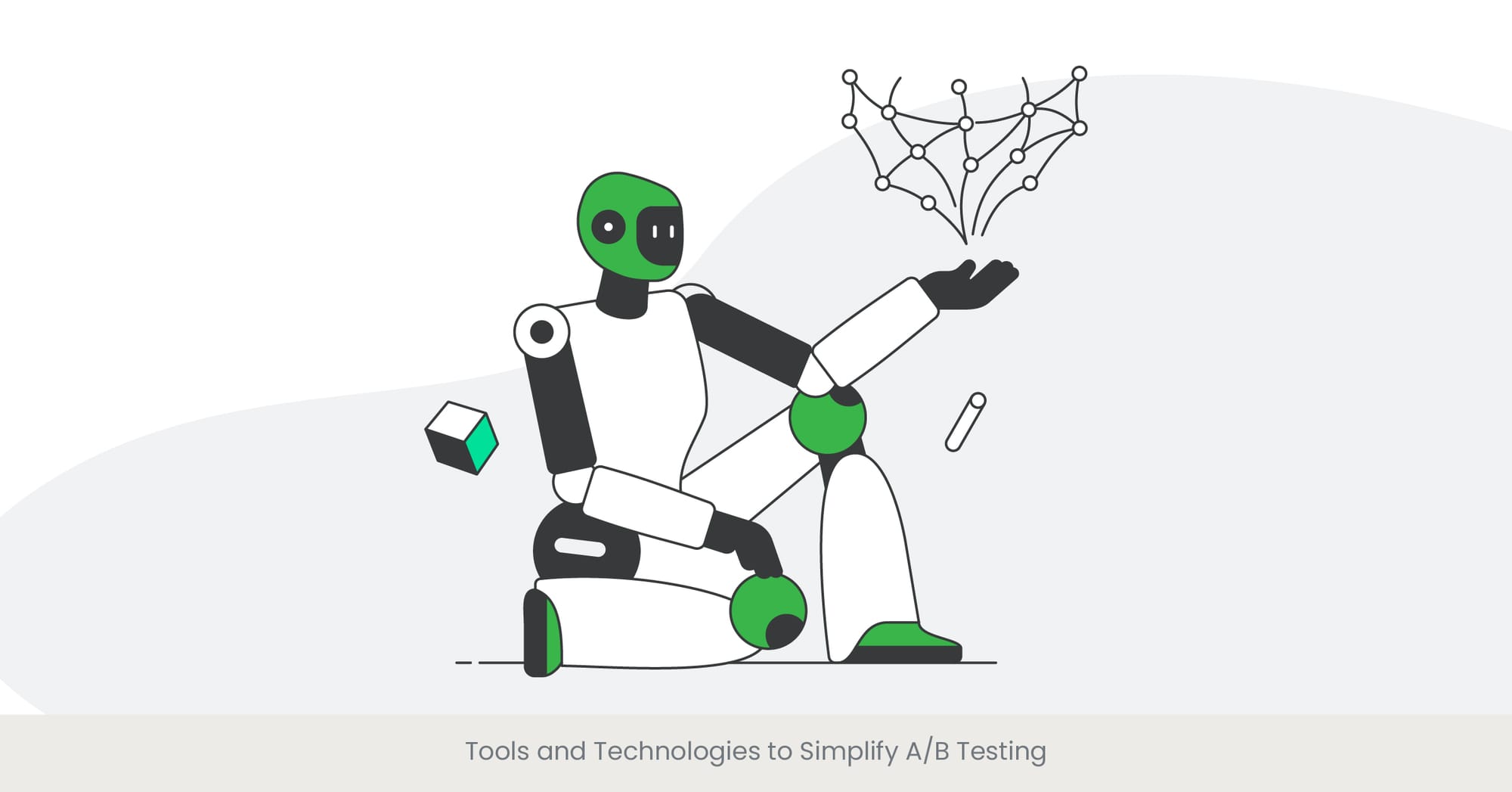
Leveraging Tools and Technologies for Effective A/B Testing
The right tools and technologies can significantly simplify the process of A/B testing, making it more efficient and accessible. These tools provide a range of features that help product managers design, implement, and analyze A/B tests with ease. By leveraging advanced technologies, you can gather accurate data, gain deeper insights into audience preferences, and make informed decisions to enhance your product presentations. Understanding how to present product strategy effectively involves utilizing these tools to streamline the A/B testing process.
Key Tools for A/B Testing
Several tools and technologies are available to facilitate A/B testing, each offering unique features to suit different needs:
- Optimizely: A popular platform that provides a comprehensive suite of features for A/B testing, including easy test setup, real-time data analysis, and detailed reporting.
- Google Optimize: A free tool that integrates with Google Analytics, allowing users to conduct A/B tests and track performance metrics seamlessly.
- VWO (Visual Website Optimizer): Offers a user-friendly interface and powerful testing capabilities, including multivariate testing and heatmaps to visualize user interactions.
- Unbounce: Specializes in A/B testing for landing pages, providing drag-and-drop functionality and extensive customization options.
- Adobe Target: A robust platform that leverages machine learning to deliver personalized experiences and optimize content through A/B testing.
Real-World Examples and Applications
A practical example of using A/B testing tools can be seen in the digital marketing campaigns of companies like Airbnb, which uses Optimizely to test various elements of their website and mobile app. By leveraging the platform’s advanced features, Airbnb can optimize user experience and increase conversion rates. Another example is in the retail sector, where companies like Shopify use Google Optimize to test different product presentation templates and promotional strategies. For product managers, utilizing these tools can simplify the A/B testing process, allowing for more efficient and effective optimization of product presentations.
Research and References Supporting A/B Testing Tools
Research from the Journal of Interactive Marketing indicates that using specialized tools for A/B testing can improve the efficiency and accuracy of the testing process by up to 40%. A study by the Data & Marketing Association found that companies using advanced A/B testing technologies report higher levels of customer engagement and conversion rates. Additionally, data from the International Journal of Market Research highlights that leveraging the right tools and technologies enables more precise targeting and personalization in presentations. These findings emphasize the importance of utilizing tools and technologies to simplify A/B testing and enhance the impact of product presentations.
If you're looking to optimize your A/B testing and make your presentations work harder, explore how INK PPT's expert team can help. Let's build something great together!
Ethical Considerations in A/B Testing
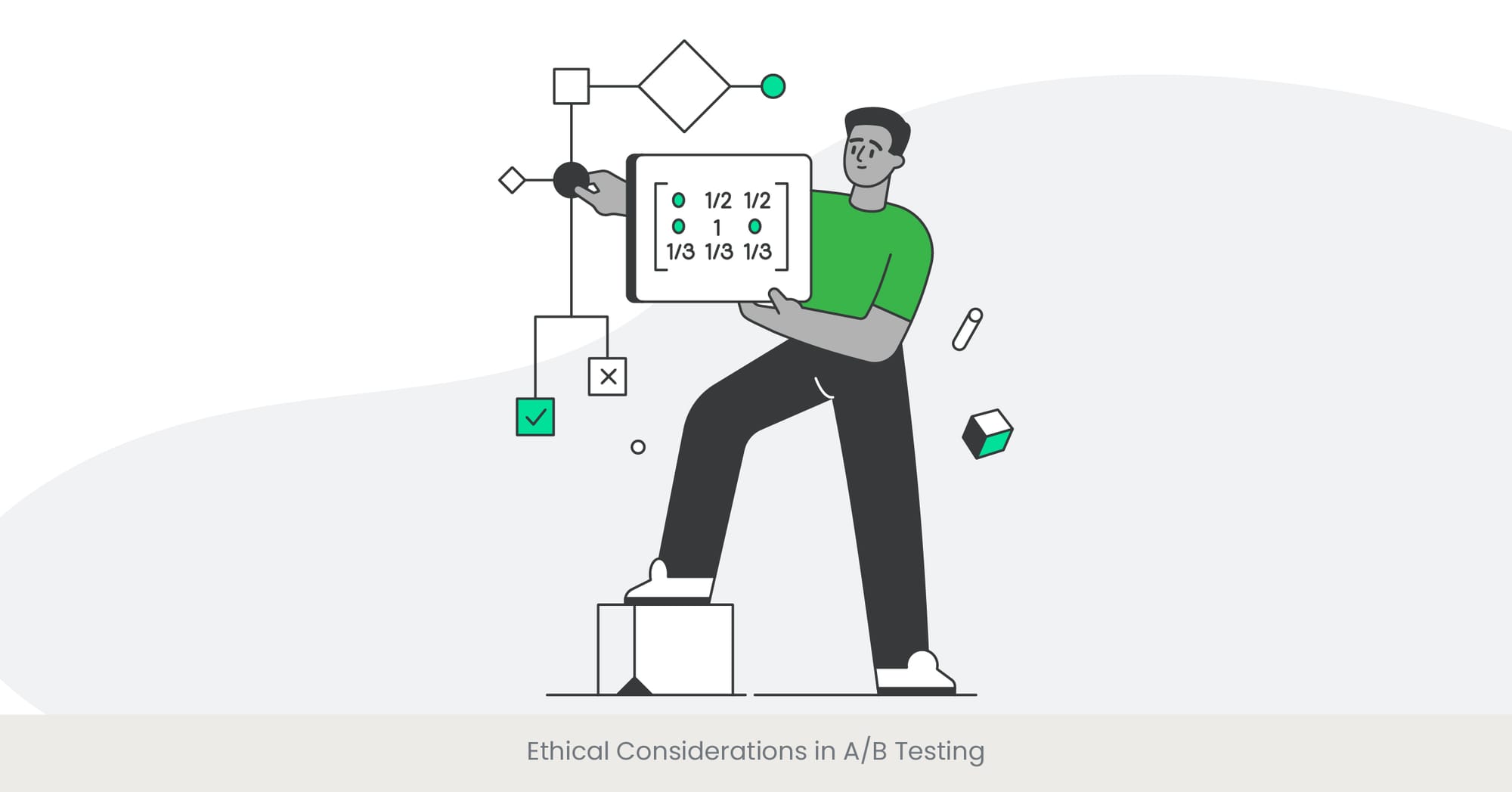
Understanding the Ethical Implications of A/B Testing
A/B testing, while powerful, comes with ethical considerations that must be addressed to ensure fairness, transparency, and respect for the audience. Product managers and marketers must be aware of these ethical implications to avoid misleading or manipulating their audience. Ethical A/B testing involves obtaining informed consent, protecting user privacy, and being transparent about the testing process. Ensuring that these considerations are addressed helps in maintaining trust and integrity, which are crucial for long-term success.
Key Ethical Issues in A/B Testing
- Informed Consent: It is essential to inform participants that they are part of an A/B test and obtain their consent. This can be done through disclaimers or notifications that explain the purpose of the test and how their data will be used.
- Privacy Protection: Protecting the privacy of participants is a fundamental ethical obligation. This includes anonymizing data, securing user information, and ensuring that personal data is not misused or shared without consent.
- Transparency: Being transparent about the testing process helps build trust with the audience. Clearly communicate the goals of the A/B test and how the results will be used to improve the product or service.
- Avoiding Manipulation: Ensure that the A/B test does not manipulate or deceive the audience. The changes being tested should genuinely aim to improve the user experience rather than exploit user behavior for short-term gains.
Real-World Examples and Applications
A practical example of addressing ethical considerations in A/B testing for product managers can be seen in the practices of companies like Facebook, which has faced scrutiny and criticism over past testing practices. As a result, Facebook has implemented more stringent ethical guidelines and transparency measures in its testing processes. Another example is in the healthcare industry, where companies like Pfizer conduct A/B testing with strict adherence to ethical standards, ensuring patient consent and data protection. For product managers, adhering to ethical considerations in A/B testing helps maintain credibility and trust with customers and stakeholders.
Research and References Supporting Ethical A/B Testing
Research from the Journal of Business Ethics indicates that ethical considerations in A/B testing are crucial for maintaining user trust and engagement. A study by the American Psychological Association found that transparency and informed consent in testing processes significantly enhance user satisfaction and trust. Additionally, data from the International Journal of Research in Marketing highlights the importance of ethical guidelines in preventing data misuse and ensuring fair testing practices. These findings underscore the necessity of addressing ethical considerations in A/B testing to ensure the integrity and success of product presentations.
Looking for customized PowerPoint presentation solutions that reflect your testing results? INK PPT provides end-to-end presentation design services for all your business needs.
Frequently Asked Questions
1. How do you show product strategy?
To show a product strategy, you should outline the long-term vision and goals for the product. This includes detailing the target market, key features, unique selling propositions, and competitive landscape. Use visual aids like roadmaps, charts, and diagrams to illustrate the strategy clearly. Include data and metrics to support your points, and explain how the strategy aligns with the overall the company strategy, goals and objectives.
2. How do you present a product marketing strategy?
Presenting a product marketing strategy involves outlining the plan for promoting and selling the product. Start with an executive summary that highlights the main points. Include detailed sections on market research, target audience, value proposition, marketing channels, and tactics. Use visuals such as graphs, charts, and infographics to make the information more digestible. Conclude with a timeline and key performance indicators (KPIs) to measure the product's success.
3. How to articulate product strategy?
To articulate a product strategy effectively, use clear and concise language. Begin with a strong executive summary that provides an overview of the strategy. Break down the strategy into key components such as product market fit analysis, product vision, competitive analysis, and go-to-market plan. Use data and examples to support your points. Make sure to align the strategy with the overall business objectives and highlight how it addresses customer needs.
4. How do you present a strategic plan?
Presenting a strategic plan involves several key steps. Start with an introduction that outlines the purpose and scope of the plan. Use a structured format to cover each section, such as objectives, strategies, tactics, and metrics. Include visual aids like timelines, Gantt charts, and SWOT analyses to illustrate your points. Engage your audience with clear explanations and relevant examples. Conclude with a summary and a call to action for stakeholders.
5. What is analytics presentation?
An analytics presentation is a structured delivery of data insights and findings, typically aimed at informing decision-making processes. It involves presenting data in a clear and compelling manner using charts, graphs, and other visual aids. Key components include the data sources, analysis methods, key findings, and actionable insights. The goal is to help the audience understand complex data and make informed decisions based on the analysis.
6. What should be included in a product presentation?
A product presentation should include several key elements: an introduction to the product, its key features and benefits, the target market, and the unique selling proposition. Include data and testimonials to support your claims. Use visual aids such as images, videos, and charts to enhance understanding. Conclude with a strong call to action, inviting the audience to engage further, such as scheduling a demo or making a purchase.
7. How do you present a presentation on data analysis?
Presenting a presentation on data analysis involves several steps. Start with an introduction that outlines the objectives and scope of the analysis. Present the methodology used for data collection and analysis. Use charts, graphs, and other visual aids to display key findings. Explain the implications of the data and provide actionable insights. Conclude with recommendations based on the analysis and invite questions from the audience.
8. What is the concept of product presentation?
The concept of product presentation involves showcasing a product to an audience with the aim of highlighting its features, benefits, and value proposition. It is a structured approach that combines visual and verbal elements to communicate the product's advantages effectively. The goal is to persuade the audience, whether potential customers, investors, or stakeholders or entire organization, to take a specific action, such as purchasing the product or investing in the company.

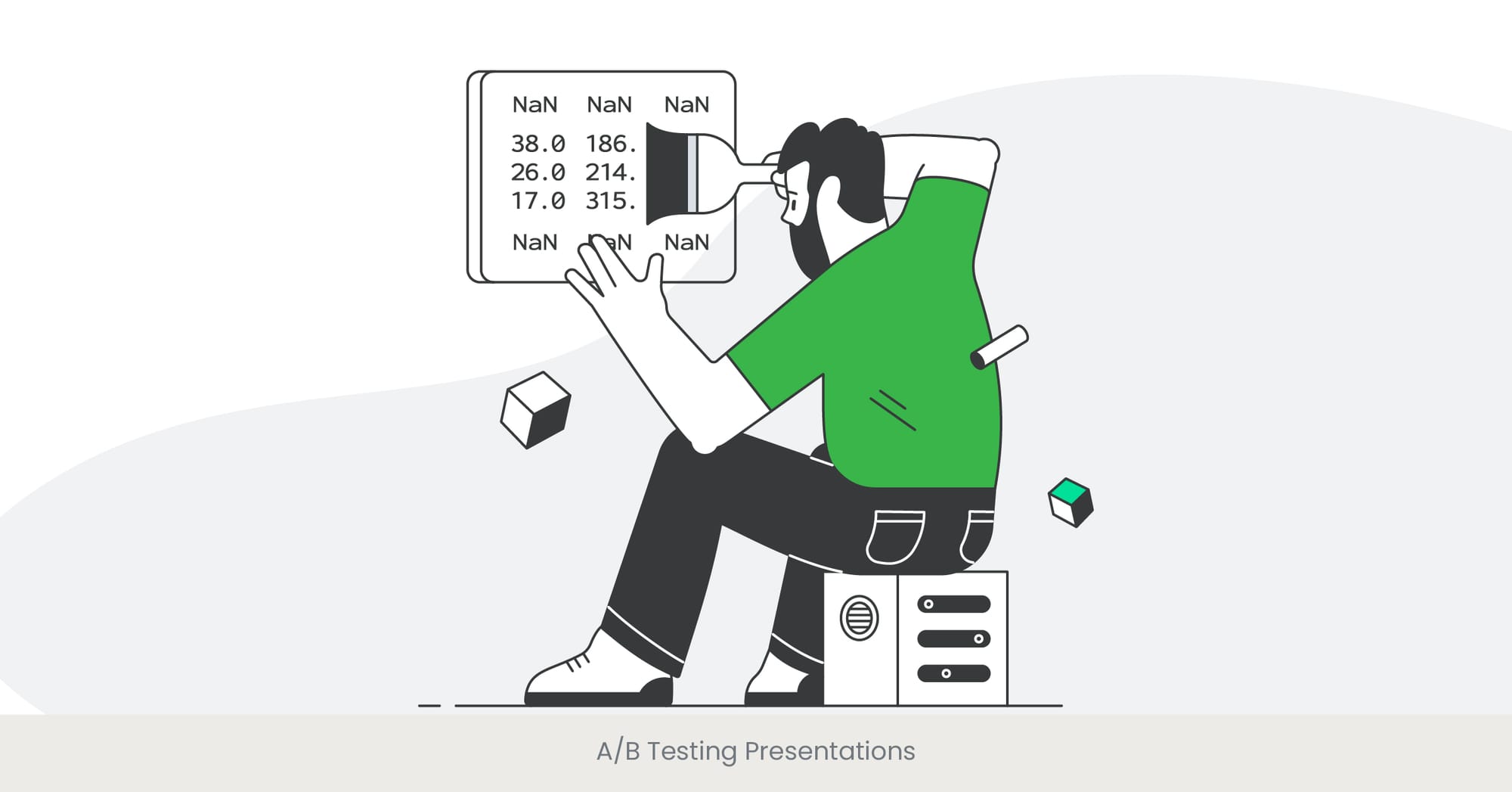

%20(1).jpg)
%20(1).jpg)

